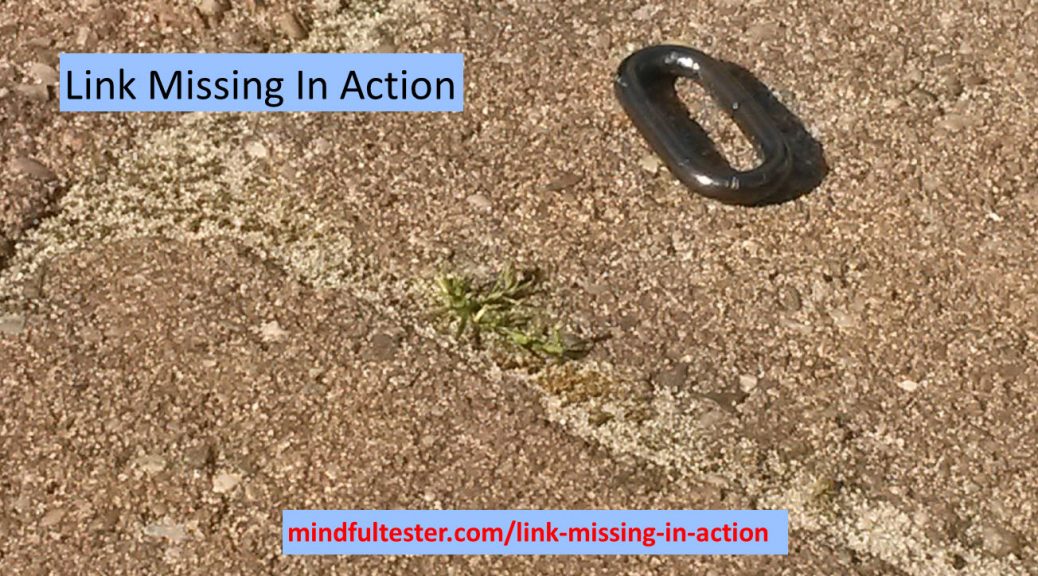In December 2018 Katherina Clokie, a known speaker, announced to look more outside the Tester community.
My reaction
Amazement, grief.
After a few months I realised that it was not a bad idea.
My change of heart
My wife has some really tough questions I have to answer. The biggest one is:
“What did you learn?”
Right behind each test conference.
So I reduced my number of test conferences and number of hours at the conferences. There are still some really good conferences like TestBash, Agile Testing Days, and European Testing Conference with plenty of awesome few insights.
I attended a lot of other conferences and after a while I would be just happy to pick up something new.
There is more to gain at a conference if you only know the basics. With more than 20 years of experience it is a way less.
It was time for my Clokie project.
Time for a small flashback to October and November 2018. I already had looked outside the Test Community.
Here are some notes from Infosecurity 2018:
In case of doubt treat data as personal data. Zip code and house number are personal data.
In EU there are several privacy government organisations, but they have different focus on privacy issues.
Steps in case of data breach:
Secure proof
Look in the logging
Determine scope
Communicate
Remediate
Learn
A change of behaviour can indicate an identity theft.
The way of accessing data in the cloud is the weakest link.
In GDPR, the European Privacy Law, a penalty is used to let the company feel the pain instead of putting a company out of business.
GDPR is not applicable for dead persons. But there can be other laws which are applicable for dead persons.
Meet the expos
How to attract people to an expo? Goodies, free access, and talks.
Some Healthcare and ICT notes of me in random order
Anonymize pictures, determine objects of interest, and annotate them using smart software.
First step is vision and then involve stakeholders like care providers, health insurers, and suppliers.
Patient panel discovered that 60 % of the patients want a personal health environment.
Care providers like hospitals and doctors are stimulated. They get money on basis of results and not on actions taken.
Law of customer’s rights. E.g. A care provider should only get information which is needed for the care to be provided.
Misconfiguration is becoming the weakest point in defense.
Meet the meetups
010dev is a small meetup in Rotterdam. It has Dutch characteristics like gezellig (cosy) and Buy Own Drink. It is in a pub after all. Once in a whole while it is in a company.
During my meetups there are no lectures, but I still listened a lot. As a tester was I am able to follow the small talk and tech talk?
In a few hours a lot of subjects passed. Programming languages, projects, and new trends were discussed. Somehow I could understand bits and pieces.
Developers.nl had a more traditional format for the meetup: free drinks, free meals, and free lectures.
I went to two meetups. The first one was abstract. It was about architecture. What are good guiding principles to set up a complex environment?
The second meetup was about vue.js. This was a challenging one. I had only basic knowledge about JavaScript and HTML. So I read some ebooks about vue.js which are based on these languages.
This talk was more understandable for me. The speaker shared some tips about vue.js.
How to speed up the performance by loading the needed content in 2 stages? First the necessary stuff was loaded for the web page. The rest followed while the user had a first impression of the page.
Looking under the hood
My blog has been made with WordPress. One day I was blogging and a conference in Rotterdam was announced in the dashboard.
There were some particular benefits: 25 Euro for a ticket including lunch, an environment friendly environment, meeting other WordPress users, short traveling distance.
As a tester I had not had a chance to attend a talk about accessibility. I honestly don’t understand this.
This conference offered more talks about this subject than I could process. I skipped the last ones.
Another interesting subject was security headers. It is possible to make WordPress secure. I was thinking that a header only contained some information.
For the interested reader have a look at my conference digest mind map.
Finishing thoughts
Retro: did I learn more than previous years?
Yes.
But what did I pick up in those previous years?
Mostly subjects related to programming and law. Less about testing.
Just made me think.
On Twitter Trish Koo placed a thought provoking tweet. In order to become better in software development you have to learn both testing and programming.



